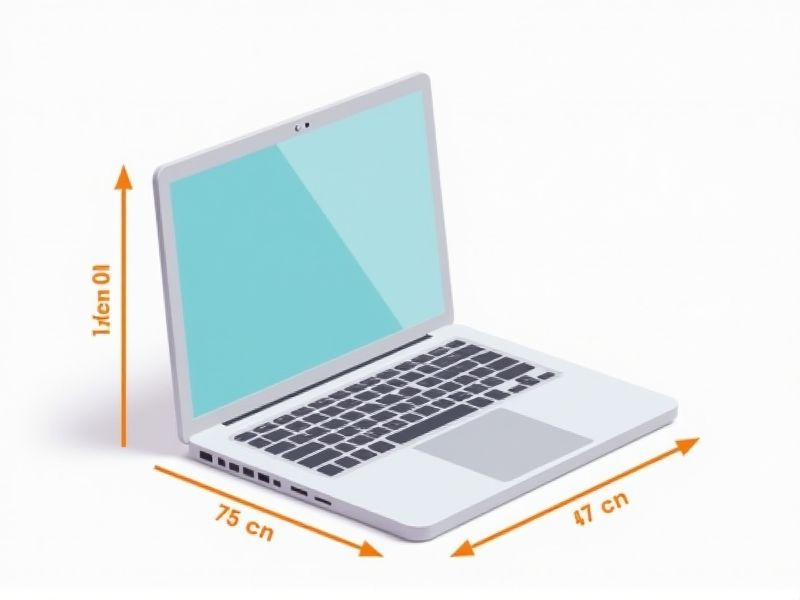
When selecting a laptop, understanding the standard dimensions can help you choose a device that fits your needs and preferences. Most laptops have screen sizes ranging from 13 to 17 inches, measured diagonally, with common widths between 12 to 15 inches and depths from 8 to 10 inches. For example, a typical 15.6-inch laptop might measure approximately 14 inches wide, 9.5 inches deep, and 0.7 inches thick. Knowing these dimensions allows you to find a laptop that balances portability with screen real estate and fits comfortably in your backpack or workspace.
Screen Size
Screen size is a critical factor in determining laptop usability, with common sizes ranging from 11 to 17 inches. A 15.6-inch display is often considered the optimal balance for productivity and portability, providing ample workspace while remaining lightweight. If you require enhanced visual experiences, models featuring 4K resolution screens can significantly improve detail, making them ideal for graphic design or video editing. When selecting your laptop, consider how screen size will impact your daily tasks, particularly if you're frequently on the move or need a larger view for complex applications.
Aspect Ratio
The aspect ratio of a laptop screen significantly impacts your viewing experience, with the most common formats being 16:9 and 3:2. A 16:9 ratio, ideal for HD video, is prevalent in gaming and multimedia devices, providing a wide, cinematic experience. In contrast, the 3:2 aspect ratio is favored by professionals for productivity, as it better accommodates documents and web browsing by offering extra vertical space. When choosing a laptop, consider how the aspect ratio will affect your daily tasks and multimedia consumption for optimal performance.
Thickness
The average laptop thickness in the 2023 market ranges from 0.5 inches to 1 inch, with ultra-thin models often featuring a thickness of 0.6 inches or less. Manufacturers such as Dell, HP, and Apple prioritize slim designs without sacrificing performance, opting for materials like aluminum or magnesium alloy to achieve a lightweight yet durable structure. The trend toward thinner laptops has led to innovative cooling solutions, often incorporating vapor chamber technology or dual-fan systems to maintain optimal temperatures in a compact form. When selecting a laptop, consider how the thickness impacts portability, as a thinner profile may enhance your ability to carry it seamlessly during daily commutes or travels.
Weight
The standard weight for laptops typically ranges from 2 to 5 pounds, affecting portability and usability. Ultra-portable models often weigh around 2 to 3 pounds, making them ideal for users on the go. Mid-range laptops generally fall within the 4-pound category, offering a balance between performance and mobility. High-performance gaming or workstation laptops may exceed 5 pounds due to additional hardware and cooling features, which can impact how you manage daily tasks.
Bezel Width
The bezel width of a laptop significantly affects its overall design and user experience. A thinner bezel, typically measuring around 3mm to 5mm, allows for larger screens within the same device footprint, enhancing your viewing area. Brands like Dell and HP have pioneered ultra-thin bezels, often referred to as "InfinityEdge" or "micro-edge" displays, which can increase screen-to-body ratios upwards of 90%. Choosing a laptop with minimal bezel width not only improves aesthetics but also immerses you in your tasks, whether for work or entertainment.
Keyboard Size
The standard keyboard size for laptops typically measures around 15 inches, ensuring a balance between functionality and portability. Key sizes generally range from 0.7 to 1.0 inches in width, providing adequate space for comfortable typing without sacrificing compactness. Many models also feature a key travel distance between 1.5 to 2.0 millimeters, enhancing tactile feedback and minimizing typing fatigue during extended use. When selecting a laptop, consider the keyboard layout and size, as they significantly impact your overall user experience.
Trackpad Dimensions
The average trackpad dimensions on mid-range laptops typically measure around 4.1 to 5.0 inches in width and 3.0 to 4.0 inches in height. Larger models, particularly in the premium segment, may feature trackpads exceeding 5.0 inches, enhancing navigation and multitasking efficiency. Precision touchpads, which comply with Microsoft's specifications, ensure smoother gestures and better responsiveness, often providing additional features like multi-finger support. When selecting a laptop, consider the trackpad size and functionality significantly affects your overall user experience.
Port Placement
When selecting a laptop, pay attention to port placement, as it significantly impacts usability. Modern laptops typically offer a variety of ports, including USB-C, HDMI, and audio jacks, often located along the sides for easy access. Many users prefer multiple USB-A ports for compatibility with legacy devices, typically offering at least two for convenience. A well-designed layout can enhance your productivity by allowing simultaneous connections without tangled cables, providing a seamless working experience.
Hinge Design
The Hinge design plays a crucial role in the overall performance and durability of laptops, affecting both portability and user experience. High-quality hinges are engineered to withstand over 20,000 opening and closing cycles, ensuring longevity. A well-designed hinge not only allows for smooth transitions between laptop modes but also enhances stability when typing, with some models achieving an angle of 180 degrees for optimal viewing. When selecting a laptop, consider the hinge mechanism as a significant factor influencing your device's resilience and functionality.
Overall Footprint
The overall footprint of a laptop refers to its dimensions, typically measured in inches, which impact portability and usability. A standard laptop generally measures between 13 to 17 inches diagonally, balancing screen size and weight for optimal user experience. Weight often ranges from 2 to 5 pounds, making it crucial for on-the-go professionals and students. Considering the overall footprint allows you to choose a laptop that fits comfortably in your bag while ensuring efficient performance on various tasks.
